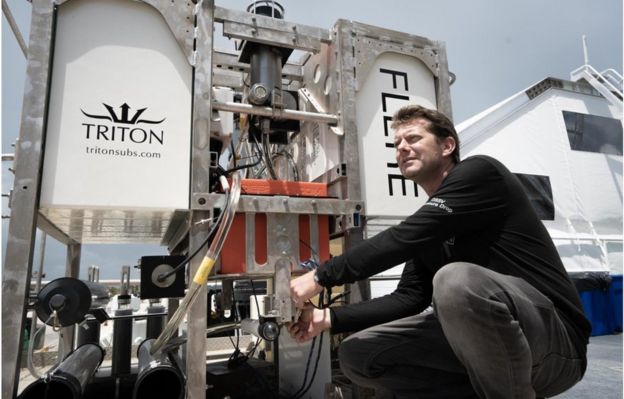Scientists develop sorbent for purifying water from radioactive elements

IMAGE: SEM IMAGES OF TUNGSTEN OXIDE SAMPLES, A WO3-100, B WO3-300, C WO3-600, D WO3-900. view more
CREDIT: FEFU PRESS OFFICE, THE INSTITUTE OF CHEMISTRY FEB RAS
Scientists from Far Eastern Federal University (FEFU) in collaboration with colleagues from the Institute of Chemistry FEB RAS come up with a smart technology for the synthesis of sorbent based on a "tungsten bronze" compound powder (Na2WO4) aimed to purify industrial and drinking water from hazardous radionuclides cesium (137Cs), and strontium (90Sr), as well as for effective processing of liquid radioactive waste. A related article appears in the Journal of Materials Science.
The new sorbent is appropriate when the concentration of hazardous radioactive elements is extremely higher than the acceptable level, i.e. for processing of liquid radioactive waste from nuclear plants and to eliminate the consequences of technological accidents.
The development resolves one of the pressing problems of modern radioecology, which is to completely or down to the level of regulative standards extract the hazardous radioactive elements cesium (137Cs) and strontium (90Sr) capable of accumulating in the body, replacing potassium and calcium.
The waste sorbent is supposed to convert into high-density ceramics with subsequent safe disposal.
"We propose to apply a sorbent in several ways. First, in the static version, granules based on tungsten bronze powder can simply be introduced into the volume of contaminated water bodies. Second, in a dynamic mode, porous sorbent tablets can be a component of flow filters. The high filtration efficiency registered by calculation methods determining the residual amount of radionuclides in sorbent-purified solutions, as well as the number of radionuclides retained in the sorbent body. We appreciate the Institute of Chemistry FEB RAS for the partial development of these methods in the frame of state assignment. We have studied physicochemical properties of the sorbent material via high-class Shimadzu equipment (Japan) and do believe that the operational properties of the material are up to analogs produced by more expensive technologies. Thus, we hope that our synthesis method will be recognized by the industry as most practical and technologically effective," says Arthur Drankov, a member of the creative team, postgraduate student of FEFU School of Natural Science.
The scientist points out that, if regenerated, the sorbent can serve five or more cycles. However, re-using of "tungsten bronze" sorbents is not the main idea, given that its absorbing abilities with respect to 137Cs and 90Sr radionuclides are well known.
The advantage proposed by researchers of FEFU School of Natural Science and FEB RAS is to convert waste granules or sorption tablets to high-density ceramics for further safe disposal during the half-life of hazardous radioactive elements. For cesium, this period is about 30 years, for strontium is about 29 years.
Scientists will develop a transforming-to-ceramics technology at the next stage of the work supported by a grant of the Russian Foundation for Basic Research (Grant chief is I. G. Tananaev, Director of FEFU School of Natural Science, corresponding member of the Russian Academy of Sciences).
Researchers suggest that the total outcome will be a cost-effective technology that guarantees environmental safety when dealing with radioactive waste.
###









